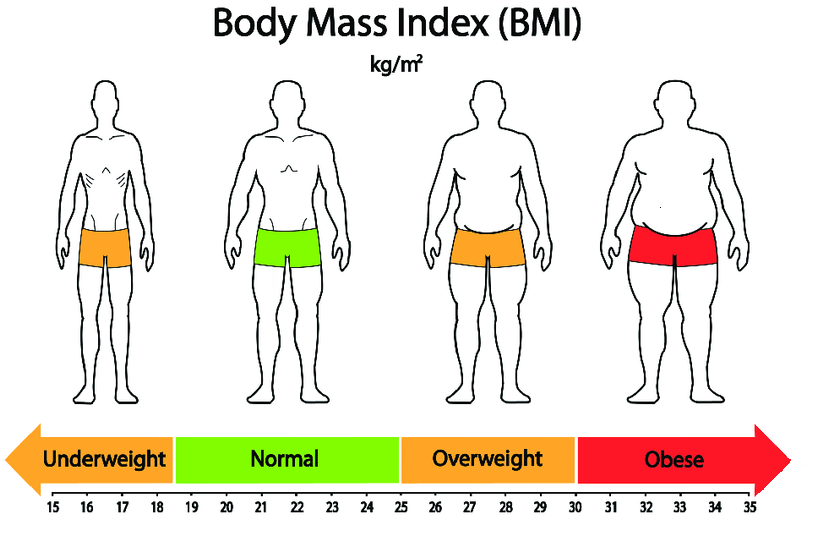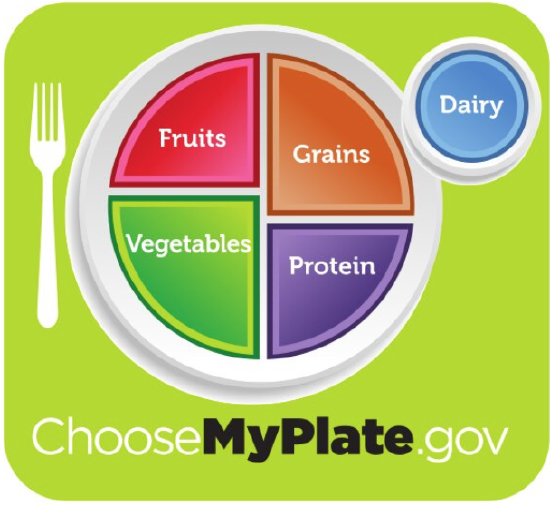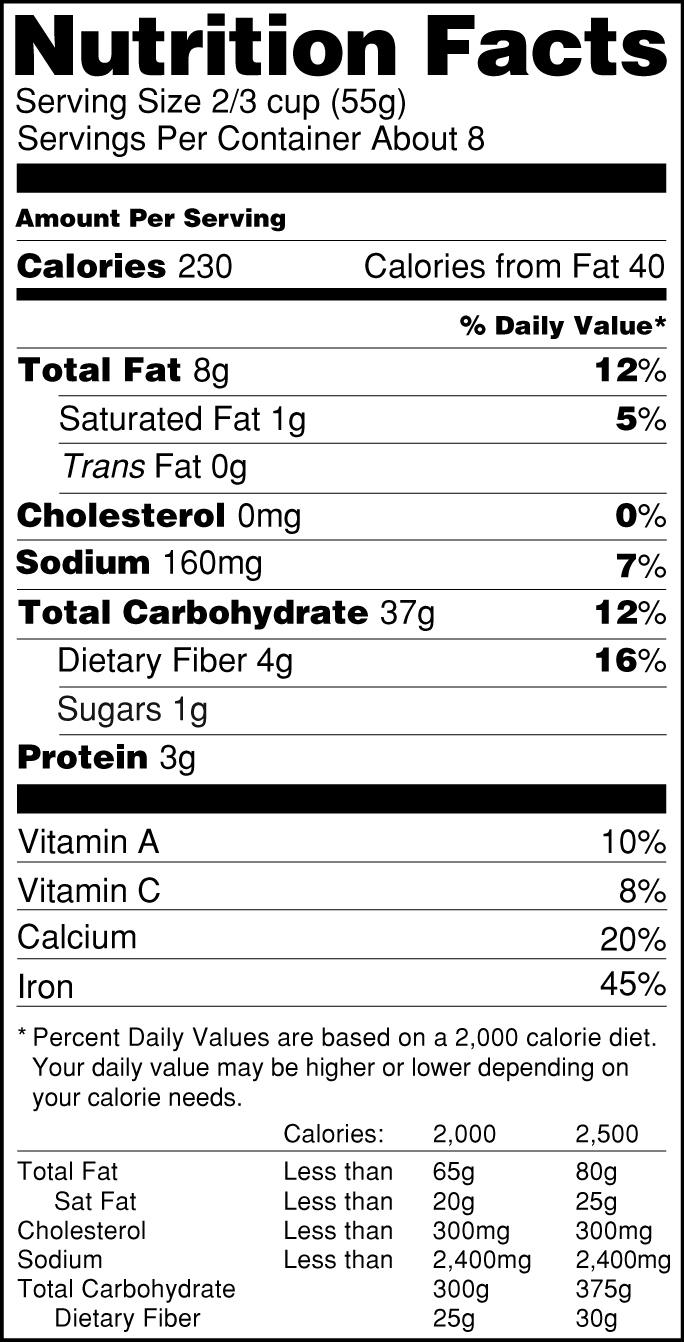5.3: Healthy Eating
- Page ID
- 92589
\( \newcommand{\vecs}[1]{\overset { \scriptstyle \rightharpoonup} {\mathbf{#1}} } \)
\( \newcommand{\vecd}[1]{\overset{-\!-\!\rightharpoonup}{\vphantom{a}\smash {#1}}} \)
\( \newcommand{\dsum}{\displaystyle\sum\limits} \)
\( \newcommand{\dint}{\displaystyle\int\limits} \)
\( \newcommand{\dlim}{\displaystyle\lim\limits} \)
\( \newcommand{\id}{\mathrm{id}}\) \( \newcommand{\Span}{\mathrm{span}}\)
( \newcommand{\kernel}{\mathrm{null}\,}\) \( \newcommand{\range}{\mathrm{range}\,}\)
\( \newcommand{\RealPart}{\mathrm{Re}}\) \( \newcommand{\ImaginaryPart}{\mathrm{Im}}\)
\( \newcommand{\Argument}{\mathrm{Arg}}\) \( \newcommand{\norm}[1]{\| #1 \|}\)
\( \newcommand{\inner}[2]{\langle #1, #2 \rangle}\)
\( \newcommand{\Span}{\mathrm{span}}\)
\( \newcommand{\id}{\mathrm{id}}\)
\( \newcommand{\Span}{\mathrm{span}}\)
\( \newcommand{\kernel}{\mathrm{null}\,}\)
\( \newcommand{\range}{\mathrm{range}\,}\)
\( \newcommand{\RealPart}{\mathrm{Re}}\)
\( \newcommand{\ImaginaryPart}{\mathrm{Im}}\)
\( \newcommand{\Argument}{\mathrm{Arg}}\)
\( \newcommand{\norm}[1]{\| #1 \|}\)
\( \newcommand{\inner}[2]{\langle #1, #2 \rangle}\)
\( \newcommand{\Span}{\mathrm{span}}\) \( \newcommand{\AA}{\unicode[.8,0]{x212B}}\)
\( \newcommand{\vectorA}[1]{\vec{#1}} % arrow\)
\( \newcommand{\vectorAt}[1]{\vec{\text{#1}}} % arrow\)
\( \newcommand{\vectorB}[1]{\overset { \scriptstyle \rightharpoonup} {\mathbf{#1}} } \)
\( \newcommand{\vectorC}[1]{\textbf{#1}} \)
\( \newcommand{\vectorD}[1]{\overrightarrow{#1}} \)
\( \newcommand{\vectorDt}[1]{\overrightarrow{\text{#1}}} \)
\( \newcommand{\vectE}[1]{\overset{-\!-\!\rightharpoonup}{\vphantom{a}\smash{\mathbf {#1}}}} \)
\( \newcommand{\vecs}[1]{\overset { \scriptstyle \rightharpoonup} {\mathbf{#1}} } \)
\( \newcommand{\vecd}[1]{\overset{-\!-\!\rightharpoonup}{\vphantom{a}\smash {#1}}} \)
\(\newcommand{\avec}{\mathbf a}\) \(\newcommand{\bvec}{\mathbf b}\) \(\newcommand{\cvec}{\mathbf c}\) \(\newcommand{\dvec}{\mathbf d}\) \(\newcommand{\dtil}{\widetilde{\mathbf d}}\) \(\newcommand{\evec}{\mathbf e}\) \(\newcommand{\fvec}{\mathbf f}\) \(\newcommand{\nvec}{\mathbf n}\) \(\newcommand{\pvec}{\mathbf p}\) \(\newcommand{\qvec}{\mathbf q}\) \(\newcommand{\svec}{\mathbf s}\) \(\newcommand{\tvec}{\mathbf t}\) \(\newcommand{\uvec}{\mathbf u}\) \(\newcommand{\vvec}{\mathbf v}\) \(\newcommand{\wvec}{\mathbf w}\) \(\newcommand{\xvec}{\mathbf x}\) \(\newcommand{\yvec}{\mathbf y}\) \(\newcommand{\zvec}{\mathbf z}\) \(\newcommand{\rvec}{\mathbf r}\) \(\newcommand{\mvec}{\mathbf m}\) \(\newcommand{\zerovec}{\mathbf 0}\) \(\newcommand{\onevec}{\mathbf 1}\) \(\newcommand{\real}{\mathbb R}\) \(\newcommand{\twovec}[2]{\left[\begin{array}{r}#1 \\ #2 \end{array}\right]}\) \(\newcommand{\ctwovec}[2]{\left[\begin{array}{c}#1 \\ #2 \end{array}\right]}\) \(\newcommand{\threevec}[3]{\left[\begin{array}{r}#1 \\ #2 \\ #3 \end{array}\right]}\) \(\newcommand{\cthreevec}[3]{\left[\begin{array}{c}#1 \\ #2 \\ #3 \end{array}\right]}\) \(\newcommand{\fourvec}[4]{\left[\begin{array}{r}#1 \\ #2 \\ #3 \\ #4 \end{array}\right]}\) \(\newcommand{\cfourvec}[4]{\left[\begin{array}{c}#1 \\ #2 \\ #3 \\ #4 \end{array}\right]}\) \(\newcommand{\fivevec}[5]{\left[\begin{array}{r}#1 \\ #2 \\ #3 \\ #4 \\ #5 \\ \end{array}\right]}\) \(\newcommand{\cfivevec}[5]{\left[\begin{array}{c}#1 \\ #2 \\ #3 \\ #4 \\ #5 \\ \end{array}\right]}\) \(\newcommand{\mattwo}[4]{\left[\begin{array}{rr}#1 \amp #2 \\ #3 \amp #4 \\ \end{array}\right]}\) \(\newcommand{\laspan}[1]{\text{Span}\{#1\}}\) \(\newcommand{\bcal}{\cal B}\) \(\newcommand{\ccal}{\cal C}\) \(\newcommand{\scal}{\cal S}\) \(\newcommand{\wcal}{\cal W}\) \(\newcommand{\ecal}{\cal E}\) \(\newcommand{\coords}[2]{\left\{#1\right\}_{#2}}\) \(\newcommand{\gray}[1]{\color{gray}{#1}}\) \(\newcommand{\lgray}[1]{\color{lightgray}{#1}}\) \(\newcommand{\rank}{\operatorname{rank}}\) \(\newcommand{\row}{\text{Row}}\) \(\newcommand{\col}{\text{Col}}\) \(\renewcommand{\row}{\text{Row}}\) \(\newcommand{\nul}{\text{Nul}}\) \(\newcommand{\var}{\text{Var}}\) \(\newcommand{\corr}{\text{corr}}\) \(\newcommand{\len}[1]{\left|#1\right|}\) \(\newcommand{\bbar}{\overline{\bvec}}\) \(\newcommand{\bhat}{\widehat{\bvec}}\) \(\newcommand{\bperp}{\bvec^\perp}\) \(\newcommand{\xhat}{\widehat{\xvec}}\) \(\newcommand{\vhat}{\widehat{\vvec}}\) \(\newcommand{\uhat}{\widehat{\uvec}}\) \(\newcommand{\what}{\widehat{\wvec}}\) \(\newcommand{\Sighat}{\widehat{\Sigma}}\) \(\newcommand{\lt}{<}\) \(\newcommand{\gt}{>}\) \(\newcommand{\amp}{&}\) \(\definecolor{fillinmathshade}{gray}{0.9}\)If you practice yoga, then you know that yoga positions such as the headstand demonstrated here can help you develop a good balance. Having good balance, in turn, can reduce your risk of falls and injuries. Another kind of balance is important to ensure that you have good health and prevent disease, and that kind of balance is a balance in your diet. Achieving a dietary balance requires healthy eating.

Benefits of Healthy Eating
It sounds like something a snake-oil salesman would say, but it’s true: healthy eating is a panacea for many human ailments. A healthy diet reduces risk of obesity, cardiovascular disease, type 2 diabetes, osteoporosis, and cancer. Not surprisingly, it also extends the length of life. In fact, an unhealthy diet is one of the leading preventable causes of death. A healthy diet also has mental health benefits. It may stall or reduce the risk of dementia and have a positive effect on memory.
Diet and Nutrition
If you adopt healthy eating habits and get enough exercise, you are likely to have good nutrition. Nutrition is the process of taking in nutrients in food and using them for growth, metabolism, and repair. Good nutrition requires eating foods rich in nutrients with the right amount of food energy (Calories) to balance energy use.
Nutrient Balance and Nutrient Density
Eating a wide range of foods, especially fruits and vegetables, is the basis of healthy eating. This helps ensure that you are eating a wide range of nutrients. However, there is only a limited amount of food you can eat in a single day without consuming too many Calories. In order to maximize the number of nutrients you take in, you need to spend your “Calorie budget” wisely by choosing foods that have high nutrient density. Nutrient density refers to how much of a given nutrient is provided by a particular food, relative to the mass of the food or the number of Calories it provides. Consider vitamin K as an example. The recommended daily value of vitamin K for adults is 90 µg. Both kale and iceberg lettuce provide vitamin K. A cup of iceberg lettuce provides about 50 µg vitamin K; a cup of kale provides more than 1000 µg of vitamin K. Therefore, kale has about 20 times the nutrient density for vitamin K as lettuce. Black beans, pictured below, are another good example of nutrient-dense food.

Energy Homeostasis and Energy Density
Good nutrition also requires achieving energy homeostasis. Energy homeostasis is a balance between the energy consumed in food and the energy expended in metabolism and physical activity. If more energy is taken in as food than is used for metabolism and activity, then the extra energy is stored as fat. An extra 3,500 Calories of food energy results in the storage of almost half a kilogram (1 lb) of body fat. If less energy is taken in than is used, then stored fat may be used for energy. The human brain, particularly the hypothalamus, plays a central role in regulating energy homeostasis. Based on biochemical signals from the body, the hypothalamus generates a sense of hunger or satiation as needed to maintain energy balance.
Energy homeostasis depends on more than hunger and satiation. It also depends on dietary choices, eating habits, and activity levels. To achieve energy balance, it is important to consider the energy density of the food. Energy density refers to the number of Calories a food provides per gram (or ounce). Foods high in carbohydrates or proteins are generally less energy-dense than foods high in lipids. Carbohydrates and proteins provide 4 Calories of energy per gram, whereas lipids provide 9 Calories of energy per gram. However, within nutrient classes, there is considerable variation in the energy density of foods. For example, fruits are high in carbohydrates that the body uses for energy. Both casaba melons and figs are fruits and provide energy, but an ounce of casaba melon provides only about 8 Calories of energy, whereas an ounce of figs provides about 80 Calories of energy. This means that figs have 10 times the energy density of casaba melons.
Malnutrition
Bad nutrition is referred to as malnutrition. The word malnutrition may make you think of starving children in Africa who do not have enough food to eat. This type of malnutrition is called undernutrition, and it is a major nutritional problem in developing countries. Undernutrition is typically caused by inadequate energy intake, often coupled with frequent bouts of infectious disease. It usually results in people being underweight for their height, and it commonly leads to growth failure in children.
Undernutrition is just one type of malnutrition. Excessive food intake can also cause malnutrition, in this case, overnutrition. This is the major nutritional problem in developed countries. Overnutrition is typically caused by excessive energy intake coupled with inadequate energy expenditure in physical activity. Overnutrition usually leads to people becoming overweight or obese (see Figure \(\PageIndex{3}\)). Obesity is associated with a host of health problems and diseases, including metabolic syndrome, cardiovascular disease, type 2 diabetes, and some types of cancer, among others.

Unbalanced nutrition is another type of malnutrition. In this case, the diet contains too much or not enough of specific nutrients other than energy. This type of malnutrition often occurs with undernutrition. However, a person doesn’t have to be undernourished to lack specific nutrients. People with adequate food intake and even people with overnutrition may have unbalanced nutrition. Getting either too much or not enough of particular nutrients may cause diseases or other health problems. For example, inadequate vitamin A intake may cause blindness, whereas too much vitamin A can be toxic. Likewise, dietary calcium deficiency may contribute to osteoporosis, whereas too much calcium can cause kidney stones.
Nutrient Needs
The goal of healthy eating is to take in the proper amount of each nutrient to meet nutrient and energy needs. The FDA identifies the recommended adult daily values (DV) for a wide variety of nutrients, based on a 2,000 Calorie daily diet. The values in the table are average values. The exact amount of each nutrient that a given individual needs may differ, depending on factors, such as age and gender. Different stages of adulthood have different nutrient needs for several nutrients, and males have somewhat higher needs for many nutrients than do females at most ages, mainly because of gender differences in body size. Other factors that influence individual nutrient needs include health status and activity level. People in poor health may need some nutrients in greater quantities. People who are very active need to obtain more energy from macronutrients in their diet.
Tools and Tips for Healthy Eating
There are so many nutrients and daily values. Eating to meet all these nutrient needs may seem like an overwhelming challenge. Do you need to keep track of the nutrient content of everything you eat to guarantee that you are meeting your nutrient needs? Fortunately, the answer is no. Healthy eating is much easier than that. Just use MyPlate and nutrition facts labels and follow the tips below. This approach will help ensure that you are meeting your nutrient needs.
MyPlate
One of the most useful tools for healthy eating is MyPlate, which is shown below. This is a visual guide to healthy eating that was developed by the United States Department of Agriculture (USDA) in 2011. MyPlate replaces the previous MyPyramid guide from the USDA and is easier to apply to daily eating. MyPlate depicts the relative proportions of different types of foods you should eat at each meal (or cumulatively by the end of the day). The foods are selected from five different food groups: vegetables, fruits, grains (such as cereal, bread, or pasta), proteins (such as meat, fish, or legumes), and dairy (such as milk, cheese, or yogurt).

According to MyPlate, about half of the food on your plate should be vegetables and fruits, and the other half should be grains and proteins. A serving of a dairy product should also accompany each meal. A meal based on MyPlate might include a serving of kale, an apple, a turkey sandwich, and a glass of milk. Think about some of your own typical meals. Do they match MyPlate? If not, how could you modify them to get the right proportions of foods from each food group?
Nutrition Facts Labels
If you are like most Americans, you rely heavily on packaged and processed foods. Although limiting these foods in your diet is a good aim, in the meantime, make use of the nutrition facts labels on these foods. A nutrition facts label, like the one shown above, gives the nutrient content and ingredients in food and makes it easy to choose the best options. A quick look at the nutrition facts can help you choose foods that are high in nutrients you are likely to need more of (such as fiber and protein) and low in nutrients you probably need less of (such as sodium and sugar). Checking the ingredients list on labels can help you choose food items that contain the most nutritious ingredients, such as whole grains instead of processed grains.

The sample nutrition label in Figure \(\PageIndex{5}\) indicates that a serving of this food is 55 g (with about 8 servings in the package). Each serving contains:
- 230 calories (with 40 calories from fat)
- 8 g total fat (making up 12% of the recommended fats per day)
- 1 g of this total fat is saturated fat (making up 5% of the daily value)
- 0 g is trans fat
- 0 mg cholesterol (0% of the daily value)
- 160 mg sodium (7% of the daily value)
- 37 g total carbohydrates (12% of daily value)
- 4 g of that is dietary fiber (16% of daily value)
- 1 g sugars
- 3 g proteins
- 10% of the recommended daily value of vitamin A
- 8% of the recommended daily value of vitamin C
- 20% of the recommended daily value of calcium
- 45% of the recommended daily value of Iron
Tips for Healthy Eating
The following tips can help you attain energy homeostasis while meeting your nutrient needs.
- Eat several smaller meals throughout the day rather than a few larger meals. Eating more frequently keeps energy, blood glucose, and insulin levels stable.
- Make healthy food choices. Try to eat whole foods rather than processed foods. Whole foods have more nutrients than processed foods. Raw foods also generally retain more nutrients than cooked foods. Overall, try to eat more plant foods and fewer animal foods.
- Make healthy grain choices. Try to make at least half your grains whole grains. Choose food items with whole grains listed as the main ingredient. Avoid foods that contain mainly or only processed grains, such as white flour or white rice. Include a variety of grains, such as rice, oats, and wheat.
- Make healthy fruit and vegetable choices. Include a variety of green, yellow, red, and orange fruits and vegetables, like those pictured below. These foods are high in vitamins and phytochemicals. Consume whole fruits instead of juices. Whole fruits are higher in fiber and more filling and may also have less sugar. The highest fiber fruits include plums and prunes.
- Combine amino acids in plant foods. The right combinations, such as beans and rice, make complete proteins with all nine essential amino acids. The two foods do not have to be eaten at the same meal to be used together by the body.
- Limit sugar and salt intake. Fresh foods generally have less of these two nutrients than processed foods. For packaged foods, read nutrition facts labels and choose options that are lower in sodium and sugars. Keep in mind that sugar may come in many forms, including high fructose corn syrup. Put away the salt shaker and sugar bowl so you won’t be tempted to add extra sodium or sugar at the table.
- Limit saturated fats. Eat more fish and legumes and less red meat. Use nut and vegetable oils instead of butter or other fats derived from animals.
- Always check for trans fats on nutrition facts labels. Try to avoid these harmful artificial fats completely.
- Increase omega-3 fatty acids. Foods that contain these essential fatty acids include salmon, walnuts, flax seeds, and canola oil.
- Stay hydrated. Eat foods high in water, such as fruits and vegetables. Also, try to drink 2 liters (about 8 cups) of fluids each day. Choose water or unsweetened beverages such as tea or coffee instead of sweetened beverages. Sweetened drinks such as soft drinks contain no nutrients except sugar. Frequent consumption of sweetened beverages is a major risk factor for metabolic syndrome, obesity, type 2 diabetes, and cardiovascular disease.
- Engage in at least 30 minutes of physical activity most days of the week. Besides all the other benefits of exercise to human health, such as strong bones and muscles, exercise uses energy that helps to balance the Calories in food.
The Zone Diet, Blood Type Diet, Paleo Diet, grapefruit diet — no doubt, you’ve heard of them all. Such diets — often referred to as fad diets — certainly feature prominently in the media, and many people try them. If you want to lose weight, you may be thinking about trying a fad diet yourself. And why not? Fad diets are certainly appealing. They often promise quick weight loss without exercise. They also generally spell out exactly what you can and cannot eat. This makes it easier for some people to consume less in the short term. But do fad diets really work, and are they healthy ways to lose weight?
In reality, most fad diets do not lead to significant, long-term weight loss. People may lose a lot of weight initially, but the weight loss is likely to be due to loss of water rather than fat. In addition, many fad diets are unhealthy because they are unbalanced. They typically restrict or eliminate foods — such as fruits, dairy, or whole grains — that should be the basis of a healthy eating plan because they are dense in critical nutrients. At the same time, such diets may recommend overconsumption of certain nutrients that can actually compromise health when eaten in excess. For example, high-protein diets can put a strain on the kidneys and potentially lead to kidney stones and gout. Fad diets that are restricted to certain foods also quickly become boring and difficult to stick with. They generally are not intended to become a healthy, lifetime eating plan. Once the weight is lost (if it is), dieters usually go back to their old ways of eating and regain the weight.
How can you tell if a diet is a fad diet? Ask these questions about it:
- Does the diet promise rapid weight loss (> 2 pounds a week)?
- Does the diet claim that the weight loss will be from certain parts of the body (such as “stubborn belly fat”)?
- Does the diet claim to work even without exercise?
- Does the diet help sell a product, such as prepackaged meals, pills, or books?
- Does the diet lack well-validated scientific evidence to back its claims?
- Does the diet use “before and after” photos or testimonials from individual dieters to “prove” that the diet works?
- Does the diet identify “bad” foods and “good” foods?
- Does the diet require following a rigid menu or meal plan?
- Does the diet sound too good to be true?
If you can answer “yes” to even one of these questions, then the diet is likely to be a fad diet. If you are serious about losing weight safely and permanently, avoid fad dieting. Instead, follow the general eating and physical activity recommendations made in this concept as well as the following specific tips.
- Practice portion control. This means knowing serving sizes, which are generally smaller than most people think. You can use nutrition facts labels and the table below to avoid super-sizing your food.
| Type of Food | Serving Size Comparison |
|---|---|
| Raw leafy vegetables Baked potato |
small fist |
|
Milk or yogurt Fresh fruit |
baseball |
|
Cereal Bread |
hockey puck |
|
Meat Poultry |
computer mouse |
| Fish | checkbook |
| Cheese | six stacked dice |
|
Margarine Butter |
one die |
- Eat breakfast every day and do not skip meals. This will keep your metabolism fired up so you use more energy. If you go long periods without eating, your body goes into starvation mode and starts “hoarding” Calories.
- Get off the couch. Choose physical activities that you enjoy so you will do them regularly. The only exercise that works is the one you will actually do. Also, include more physical activity throughout each day. Park farther from your destination and walk the rest of the way. Take the stairs whenever you can. Wearing a pedometer may challenge you to reach the recommended 10,000 steps a day.
- Follow MyPlate but use a smaller plate. If you use a salad plate instead of a dinner plate, for example, the same-sized serving of food will look larger. You will eat less without feeling deprived.
Following the healthy-eating guidelines in this concept and the specific tips above should lead to a slow but steady weight loss of a pound or two a week. Losing weight slowly may be frustrating, but it is more likely to stay off than weight that is lost rapidly. It took you time to gain excess weight so it will take time to lose it. The only way to keep it off is to establish a healthy pattern of eating and physical activity that you can live with lifelong.
Review
- Why is healthy eating important for good health?
- Define nutrition. What does good nutrition depend on?
- Define malnutrition, and identify types of malnutrition.
- Briefly describe what healthy eating means.
- What is nutrient density? How is it related to nutritious food choices?
- Define energy homeostasis, and identify factors that regulate or influence energy homeostasis.
- What is energy density, and how is it related to energy homeostasis?
- What are the recommended daily values of nutrients?
- List factors that influence nutrient needs of individuals.
- Describe MyPlate. What food groups is it based on?
- What information do nutrition facts labels provide? How can the information be used to choose the most nutritious food options?
- Give two tips for healthy eating.
- If there are 100 Calories per 100 grams of a baked potato, and 5.5 Calories per 1 gram of potato chips, which has a higher energy density — a baked potato or potato chips? Explain your answer.
- When comparing two multivitamins in the store, you see that one has 500% of the daily value for a particular vitamin, while the other has 100% of the daily value for that vitamin. Is the one with 500% of the daily value necessarily better for your health? Explain your answer.
- Explain why it is better for your health to eat whole fruits instead of drinking fruit juices.
Explore More
Many people feel passionate about only eating natural, healthy foods and seek dietary advice from many different sources. In today's time it can be hard to distinguish fact from fiction, learn about consuming cholesterol here:
Attributions
- Yoga by YogawithAmit via Pixabay license
- Corn and black bean salad by National Cancer Institute, public domain via Wikimedia Commons
- BMI by Adriana Arcaia, Janet Woolen, and Suzanne Bakken (Article: A Systematic Method for Exploring Data Attributes in Preparation for Designing Tailored Infographics of Patient Reported Outcomes), CC BY 4.0 via Research Gate
- My plate infographic by United States Department of Agriculture, public domain via Wikimedia Commons
- Nutrition label by USFDA, public domain via Wikimedia Commons
- Text adapted from Human Biology by CK-12 licensed CC BY-NC 3.0


